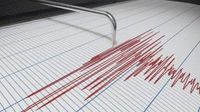On Monday afternoon, July 14, 2025, a significant earthquake rattled the Pacific coast of Panama, registering a magnitude of 6.2 according to the United States Geological Survey (USGS). The tremor struck at 17:16 UTC (1:16 p.m. Eastern Time), with its epicenter located deep in the Panama Fracture Zone, approximately 206 kilometers (128 miles) south of the Burica region and near the Costa Rican border.
The earthquake occurred at a shallow depth of 10 kilometers (6.2 miles), a factor that often intensifies the shaking felt on the surface. Despite the strength and proximity to populated areas, initial reports from Panamanian authorities and international agencies indicated no casualties or significant damage. Panama's National Civil Protection System, led by Omar Smith, confirmed that no tsunami warnings or advisories were issued following the quake, providing reassurance to residents and neighboring countries.
The tremor was felt in parts of western Panama, particularly in Chiriquí province near the border with Costa Rica, where seismic activity is a familiar occurrence. Reports also came from Colombia and Costa Rica, where residents near the border sensed the shaking, though no harm was reported. Approximately 4,000 people experienced light shaking, while around 30,000 felt weaker tremors, according to estimates from the USGS and European-Mediterranean Seismological Centre (EMSC).
Early assessments by the USGS issued a Green alert for potential shaking-related fatalities and economic losses, indicating a low likelihood of casualties or significant damage. This assessment aligns with Panama's mixed infrastructure, which includes both vulnerable structures—such as mud wall and informal metal or timber buildings—and more earthquake-resistant constructions. Past seismic events in the region have occasionally triggered secondary hazards like landslides and liquefaction, but no such incidents were reported this time.
The earthquake occurred in a tectonically complex area where the Cocos, Nazca, and Caribbean plates converge. This triple junction near the intersection of the Middle America Trench and the Panama Fracture Zone is part of the Pacific Ring of Fire, a notorious belt of seismic and volcanic activity encircling the Pacific Ocean. While the Ring of Fire is often associated with frequent earthquakes and volcanic eruptions, it is not a single continuous fault but rather a series of active zones where tectonic plates interact.
Interestingly, initial magnitude readings varied, with some agencies like the Pacific Tsunami Warning Center (PTWC) and Colombia's Geological Service reporting a preliminary magnitude of 6.6 before the USGS revised it down to 6.2. Such revisions are common as seismologists analyze data from multiple stations to refine the quake's characteristics.
Panama's civil protection agency stressed the importance of continued monitoring, especially given the region's history of seismic activity. A related 5.9 magnitude quake was reported southwest of Isla Coiba around the same time, likely an aftershock. Authorities advised residents to stay alert for potential aftershocks but noted that daily life had quickly resumed without evacuations or major disruptions.
The quake's epicenter lay far from major population centers—about 216 kilometers (134 miles) south of Burica, a small town with roughly 1,360 residents, and 243 kilometers (151 miles) south of Puerto Armuelles, which has a population of approximately 11,743. This remote location contributed to the minimal impact on human settlements.
Seismologists and disaster response officials have underscored the importance of preparedness in this seismically active region. Omar Smith, head of Panama’s National Civil Protection System, commented, “We keep monitoring across the country,” highlighting the vigilance maintained even after the quake passed without serious incident.
This event follows a pattern of seismic activity in the area, with similar-sized quakes recorded in March 2025 near Panama’s southern coastal regions, none of which caused major damage. The region’s residents, accustomed to such natural phenomena, continue to rely on early warning systems and civil protection measures to mitigate risks.
Overall, the July 14 earthquake serves as a reminder of the dynamic geological forces shaping Central America. While no immediate harm was reported, the event reinforces the need for ongoing monitoring and infrastructure resilience in the face of inevitable future seismic events along the Pacific Ring of Fire.





